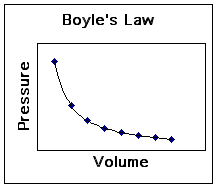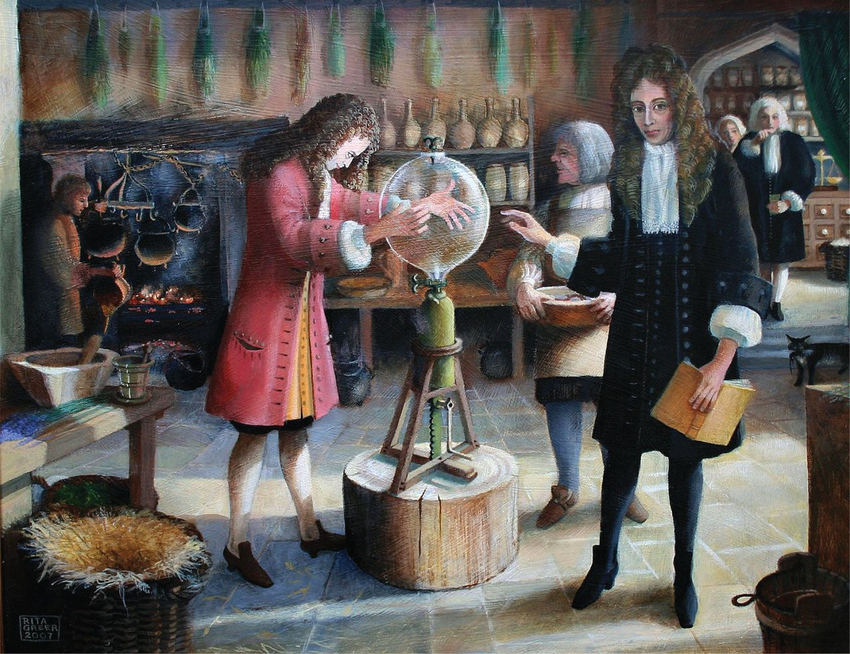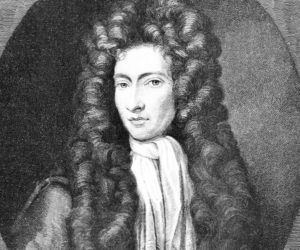The discovery of the relationship between gas volume and air pressure was published by Robert Boyle in 1662 and is known today as Boyle’s Law. It states that air pressure is inversely proportional to the volume it occupies, for a fixed temperature in a closed system.
The Pressure-Volume Correlation

In early human history an understanding of the universe was mostly marked by deep philosophical thinking. Questions were poised and then mulled over. The answers were logical explanations that came directly from the human mind. Little emphasis was placed on observation and experimentation. Starting around the 16th century the field of science was beginning to make radical changes. It marked a period of revolution in a way of thinking and a desire to know and understand natural laws. The new way of thinking affected all aspects of society, influencing and altering belief systems, politics, and the economy. One critical advancement in the way science was conducted was that the mathematization of science was beginning to appear and take hold. Boyle’s Law was the first physical law to be expressed in the form of an equation describing the dependence of two variable quantities.
The foundations of Boyle’s Law was laid on experiments with air pressure and connected with the work of Itialian physicist Evangelista Torricelli and the French mathematician Blaise Pascal. Torricelli’s work on the vacuum began to break down the deeply held Aristotelian notions about the weight and nature of air. Further experiments at this time were conducted that illustrated the compression and expansion abilities of air. Pascal, having learned of Torricelli’s experiments, also began experimenting on the nature of air. He noted that when a half inflated balloon was carried up a mountain (to an place of different air pressure) the balloon would expand. He therefore speculated that there was a relationship between the volume of air and the pressure exerted on it.
The original hypothesis was given to Boyle by Richard Towneley and his assistant Henry Power in 1661 via letter. Power performed his first experiments on air pressure in 1653. He performed more conclusive ones in 1660 with the collaboration of Richard Towneley. These experiments were similar in nature to the Torricellian experiments that were commonly being performed at the time. Boyle was also familiar with the Torricellian experiments when he began systematically investigating air pressure in 1658. He was working with Robert Hooke, who was designing a superior air pump that they were using to investigate the elasticity of air. In 1661 Towneley and Power deduced that there was a proportionality with the volume of air and the external air pressure in their experiments. Boyle devised a series of experiments to check the hypothesis. He repeated several experiments using different amounts of mercury in a J-tube, an apparatus for measuring both the volume of air and its pressure. Publication followed after Boyle and Hooke had successfully verified the Towneley/Power hypothesis. In 1676 the French chemist Edme Mariotte also came to the same conclusion independently but in addition discovered that air volume changes with temperature.
Boyle’s law can be expressed mathematically as 
Applications of Boyle’s Law
Practical applications of Boyle’s Law can be applied to nearly anything that involves compressed air to do useful work. One common contemporary example is the aerosol spray. Aerosol spray works by having its contents contained in a can under extremely high pressure. When the nozzle is pressed down the pressure of the gas or liquid inside the can is decreased. As a result the compressed gas expands causing its contents to spray outward. This is how hairspray, spray paint, and every other aerosol spray works. Boyle’s Law can also be applied under varying temperatures. A basketball bounces less and your car tires air pressure decreases as it becomes colder outside.
However the most vital example of Boyle’s Law at work is in the human respiratory system. You bring air into your lungs by contracting your respiratory muscles to increase the volume in your chest, and hence decreasing the pressure on your chest. Basically air moves from your lungs to the atmosphere and back due to a change of pressure inside and outside of your chest. The mechanics of breathing are nicely explained by this scientific principle!
Continue reading more about the exciting history of science!

